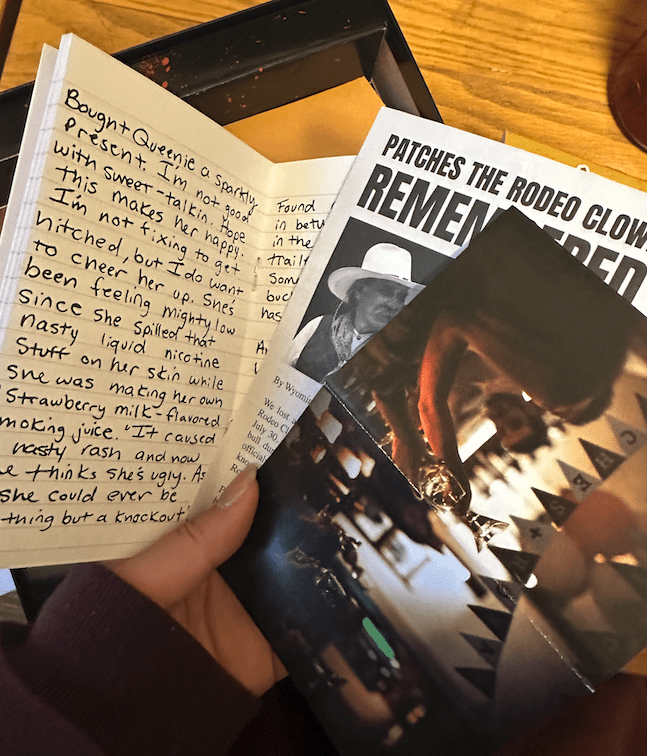For this week’s critical play, I played “Rip at the Rodeo” by Hunt a Killer. It’s a mystery in a box for an adult audience (the game deals with drug abuse and gore) who enjoys discovery as a form of fun.
Unlike many other similar boxes, Rip at the Rodeo foregoes difficult challenges in favor of a sensory experience to progress the narrative.
The primary mechanic of the game is examining materials. The game designers center the sensory experience by making each item hyper realistic. As I played, I noticed that each piece of literature was printed on a different type of paper. For example, the receipt is on a thicker, laminated piece of paper while the coroner’s reports are on normal printer paper. Even the scraps of notes from different characters are on not only different designs of stationary, but different also printed on different papers. This attention to detail immerses the player into the world of the mystery, making them feel excited to pick up and read each next piece of lore.

I felt, however, that the digital portion of the story, which was a faux file system on a website, was lacking. The system didn’t look very realistic at all, and was a let down in comparison to the physical materials. Because of this, I didn’t spend as much time on the digital materials as the physical ones, meaning that I didn’t delve as deep into some parts of the narrative.

Ultimately, however, the game tells an emergent narrative through short pieces of writing presented in a non-chronological order that eventually come together to make the mystery clear.
Secondly, I rather than hiding information behind challenges, Rip at the Rodeo used the simple mechanics of putting the items in the box in a predetermined order to force a dynamic where players don’t see the next piece until lifting the piece on top of it. This means that players have to read the material in the predetermined order, thus cause the emergence of a surprising and suspenseful aesthetic as pieces of information are drip fed to the player rather than presented all at once.
There are, however, some “puzzles” in the game. The password puzzles as largely trivial, so I’d like to focus on the space based puzzles. By reading through all the information, the player can keep track of the locations of each character around the time of the crime. This is the primary thing keeping this game from being more of a mystery game than simply a mystery story. Ultimately, the player needs to decide which character has the opportunity to commit the crime. In this way, the character’s actions and thus the narrative is controlled by the architecture of the setting. The game designers had to carefully avoid contradicting time and place setting, lest they cast suspicion on characters that are truly innocent.
Finally, I identified that the game primarily operates off of arcs. Rarely do players ever return to an object, and the primary action is simply reading. Players start with some mental model of what happened in the mystery, then the take the action of reading a new piece of information. This usually ends in an evocative or emotional feedback when the player realizes something new about what happened on the day of the crime, causing them to update mental model. This then occurs again for the next object, and so on an so forth until the player has the whole narrative.
In conclusion, Rip at the Rodeo uses a sensory experience to incentivize players to go through consecutive game arcs, unlocking the narrative in an emergent way.




